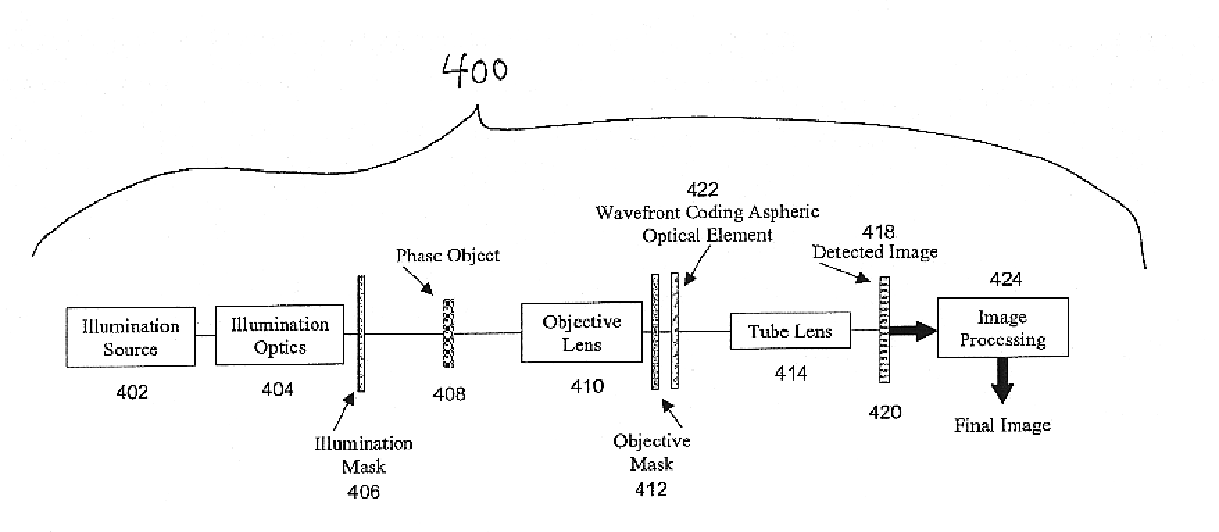Combined wavefront coding and amplitude contrast imaging systems
a technology of contrast imaging and wavefront coding, applied in the field of contrast imaging, can solve the problems of not being illuminated sufficiently, not directly available final image using wavefront coding, etc., and achieve the effects of improving contrast imaging of phase objects, increasing depth of field and controlling focus-related aberrations
- Summary
- Abstract
- Description
- Claims
- Application Information
AI Technical Summary
Benefits of technology
Problems solved by technology
Method used
Image
Examples
Embodiment Construction
Wavefront Coding can be combined with traditional objectives and objective masks in Amplitude Contrast systems, as shown in FIG. 4, to achieve an increased depth of field in an optical and digital imaging system. This can be explained through inspection of the ambiguity functions and modulation transfer functions (MTFs) of the related traditional, amplitude contrast systems, and Wavefront Coded imaging systems, as shown in FIGS. 5-9. FIG. 10 shows a real world image taken with a system having only Amplitude Contrast, compared to a system combining Amplitude Contrast and Wavefront Coding and post processing.
FIG. 4 shows a combined Extended Depth of Field (EDF) and Amplitude Contrast Imaging system 400 including Wavefront Coding and post processing in accordance with the present invention. The general Amplitude Contrast imaging system of FIG. 1 is modified with a special purpose generalized aspheric optical element 422 and image processing 424 of the detected image to form the final i...
PUM
 Login to View More
Login to View More Abstract
Description
Claims
Application Information
 Login to View More
Login to View More - R&D
- Intellectual Property
- Life Sciences
- Materials
- Tech Scout
- Unparalleled Data Quality
- Higher Quality Content
- 60% Fewer Hallucinations
Browse by: Latest US Patents, China's latest patents, Technical Efficacy Thesaurus, Application Domain, Technology Topic, Popular Technical Reports.
© 2025 PatSnap. All rights reserved.Legal|Privacy policy|Modern Slavery Act Transparency Statement|Sitemap|About US| Contact US: help@patsnap.com



